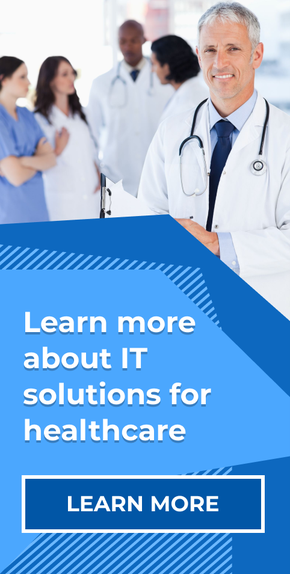How far would you go to protect your patients’ sensitive data? One thing is for sure — you’ll need to stay ahead of the cybercriminals. The topic of healthcare data security has recently come up in the media on multiple occasions, mostly in connection with breaches and leaks.
For example, DuPage Medical Group, the largest independent physician group in Illinois, reported the exposure of 600,000 patient records in August. The University Medical Center in Las Vegas was hit by a ransomware attack in June, with the personal data of 1.3 million people affected. A cyberattack was also detected in St. Joseph's/Candler hospitals in June 2021. The investigation discovered that a total of 1.4 million patient records may have been exposed.
Medical facilities require their patients’ data to operate, but often lack the tools needed to keep it safe from harm. Demigos has been building healthtech solutions for many years. We’re well aware of how critical patient data security is, and we make it our top priority on every project.
If you’re planning to develop healthcare data security software, stay on this page. In this post, we’ll tell you what we know about the privacy and security of medical data, the regulations that govern its protection, and the main challenges hospitals face. We’ll also offer tips on how to prevent those issues and give you a list of possible solutions.
Let’s start with the basics.
The importance of data protection in healthcare
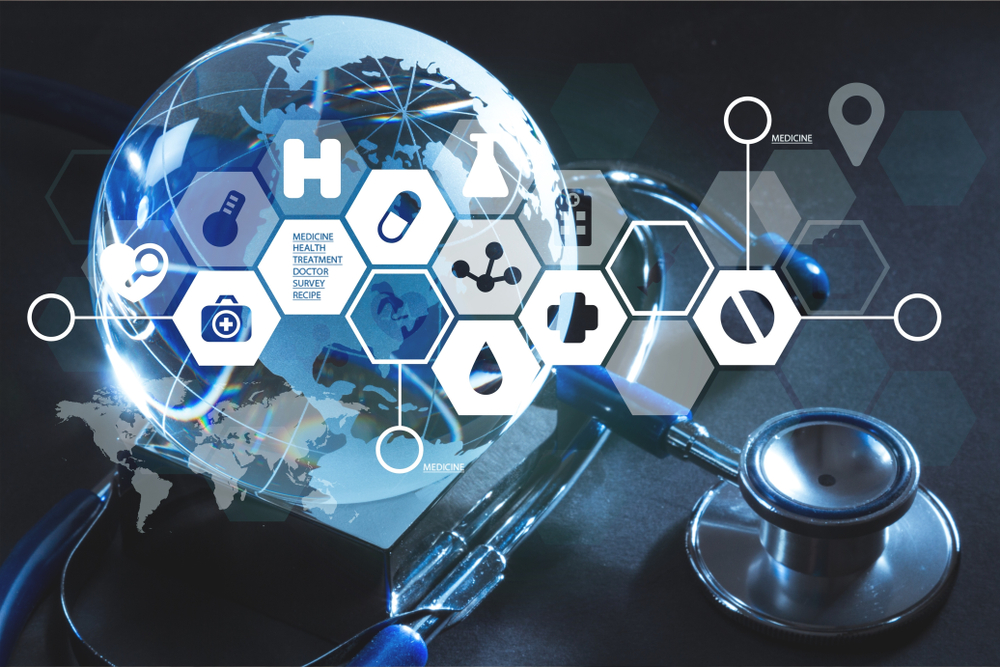
Few other industries gather as much personal data about their customers as does healthcare. The amount of PHI, or protected health information, keeps growing fast. Especially now that medical information is entered and updated in countless EMRs (electronic medical records) for Covid-19 patients every day.
So, what exactly is PHI? In short, it’s any details about a person’s medical record (history, lab results, insurance, etc.), along with their demographic data, that is associated with their identity. Medical organizations need PHI to provide their services, and insurers rely on it to offer coverage.
When such information ends up in the wrong hands, two things can happen:
-
It can be used with malicious intent. For example, hackers can use healthcare data to blackmail and extort the individual, or cause them grave distress. They can also steal medical data to perform fraudulent activities like insurance scams.
-
A healthcare provider can be fined. In most countries of the world, the medical facility is held liable for allowing the breach to occur. This means possible fines, costly lawsuits, steep compensation, and reputational loss.
There’s another concern specific to exposed medical data. With other types of identity theft, the affected person can legally change their ID, bank accounts, social security number, and so on.
With medical information, there’s simply no way of doing it.
So one data leak can have multiple recurring consequences, just like it did for a US Marine who lost his wallet in 2004. The health data lost with that wallet cost the young man over $20,000 in bills for medical procedures.
As you can see, ignoring the issue of data security in healthcare can result in a slew of problems for patients, hospitals, and medical insurers.
That is why healthcare-related software that collects and processes PHI must adhere to certain standards and regulations. Read the next section to find out more.
Healthcare data protection in different parts of the globe
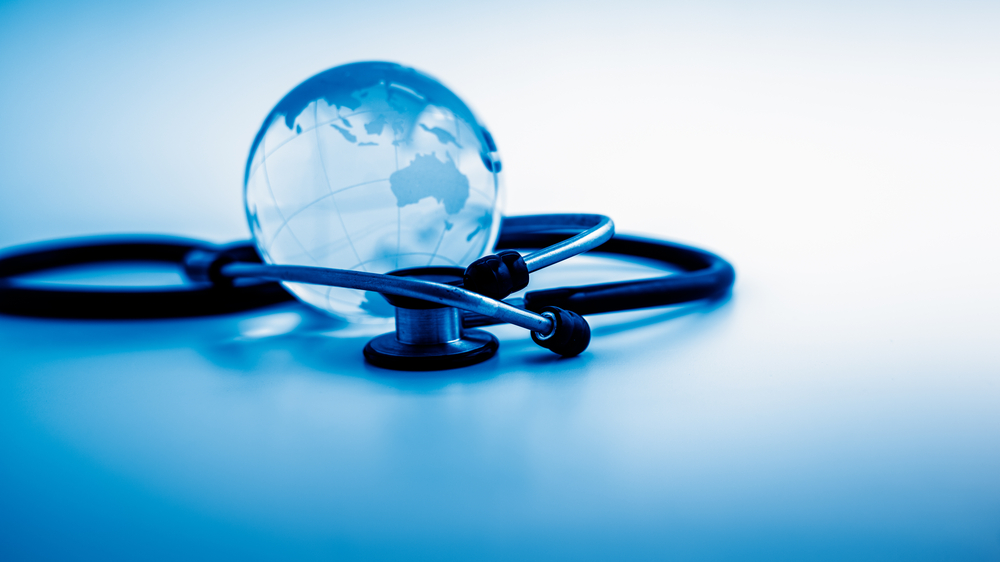
In our data-driven world, numerous laws guard data privacy and security in healthcare and other domains that rely on PII (personally identifiable information). Let’s look at them by region.
USA
US healthcare providers, health plans, and even clearinghouses are obligated to comply with the requirements of the Health Insurance Portability and Accountability Act of 1996 (HIPAA). It means that the software serving the needs of those organizations or their business associates must be HIPAA-compliant. This includes non-medical companies that use patient data for analysis, marketing activities, etc.
HIPAA’s Security Rule ensures that covered entities can effectively collect, process, and exchange PHI in electronic form, while protecting the privacy and security of their customers. Encrypting and backing up personal data is mandatory, and so is disposing of it after the designated period of use expires.
By the way, if you’re starting a business in the medical field, we have a piece on the regulatory requirements in US healthcare that will be worth your time.
Canada
The Canadian Personal Information Protection and Electronic Documents Act (PIPEDA) is the country’s main regulation that applies to personally identifiable information in healthcare. This is a stark difference from HIPAA, which regulates all PII, regardless of the domain.
The act clearly stipulates the following principles:
-
consent and a legitimate reason are necessary provisions for data collection
-
data must be used within a set timeframe and only for the original reason
-
all information must be accurate, and there must be a mechanism for correcting it
-
data must be stored in secure locations (the provinces of British Columbia and Nova Scotia have specific requirements — data must be kept exclusively on Canadian servers)
PIPEDA protects any data that is categorized as PII, including opinions, comments, financial and medical histories, and more.
Read also: How to Develop a Medical Second Opinion Platform
On top of that, there are many local laws that regulate the same aspects of data privacy and are used instead of PIPEDA, including PIPA in British Columbia and Alberta), the Privacy Act in Quebec, and PHIPA in Ontario.
Europe
The General Data Protection Regulation (GDPR) came into effect in 2018 and has since governed the collection, storage, and exchange of personal data in the UK, all of the EU, and some non-member countries. The scope of its applicability isn’t limited to medical software. However, any legal entity that plans on developing healthcare solutions for the EU market must comply with the provisions of GDPR.
Read also: Data Storage and Management in Healthcare
When it comes to data privacy, GDPR shares many similarities with HIPAA and PIPEDA, with a few notable differences:
-
it requires anonymity of personal data
-
it grants data owners the right to access their data, change or destroy it, as well as withdraw their consent
GDPR represents the latest trends in data privacy lawmaking and aims to transfer control of sensitive personal information from corporations to the original owners.
Asia-Pacific region
The Asian-Pacific region comprises many countries with different privacy regulations, so we’ll focus on the two most populous nations, China and India.
Until recently, two major laws regulated most aspects of data privacy and security in China:
-
CSL — Cyber Security Law
-
DSL — Data Security Law
As of November 2021, the Personal Information Protection Law (PIPL), became the latest and most comprehensive data protection regulation in the country.
The above laws regulate the collection, management, and exchange of PHI, as well as pharmaceutical and genetic data within China. Any manipulation of patient data requires the patient’s consent, and cross-border transfers can be performed only under scrutiny from government regulators.
Read also: How to Build Custom Pharmaceutical Software Solutions
In addition to that, the Civil Code of the People’s Republic of China guarantees citizens their basic rights concerning privacy and the protection of personal data.
In India, the protection of medical data is governed by the Sectoral Privacy Guide. The document is closely modeled on the principles of GDPR, with a similar degree of control given to the public. The concept of PHI entails all data concerning a citizen’s physical and mental health.
Prior to that, Electronic Health Record Standards, published by the Ministry of Health and Family Welfare in 2016, described a set of rules governing the security and privacy of patient data in EHR/EMR systems.
Now that you have a better idea of the various healthcare data security regulations, let’s talk about the challenges compliant providers can still face.
Biggest healthcare data security challenges
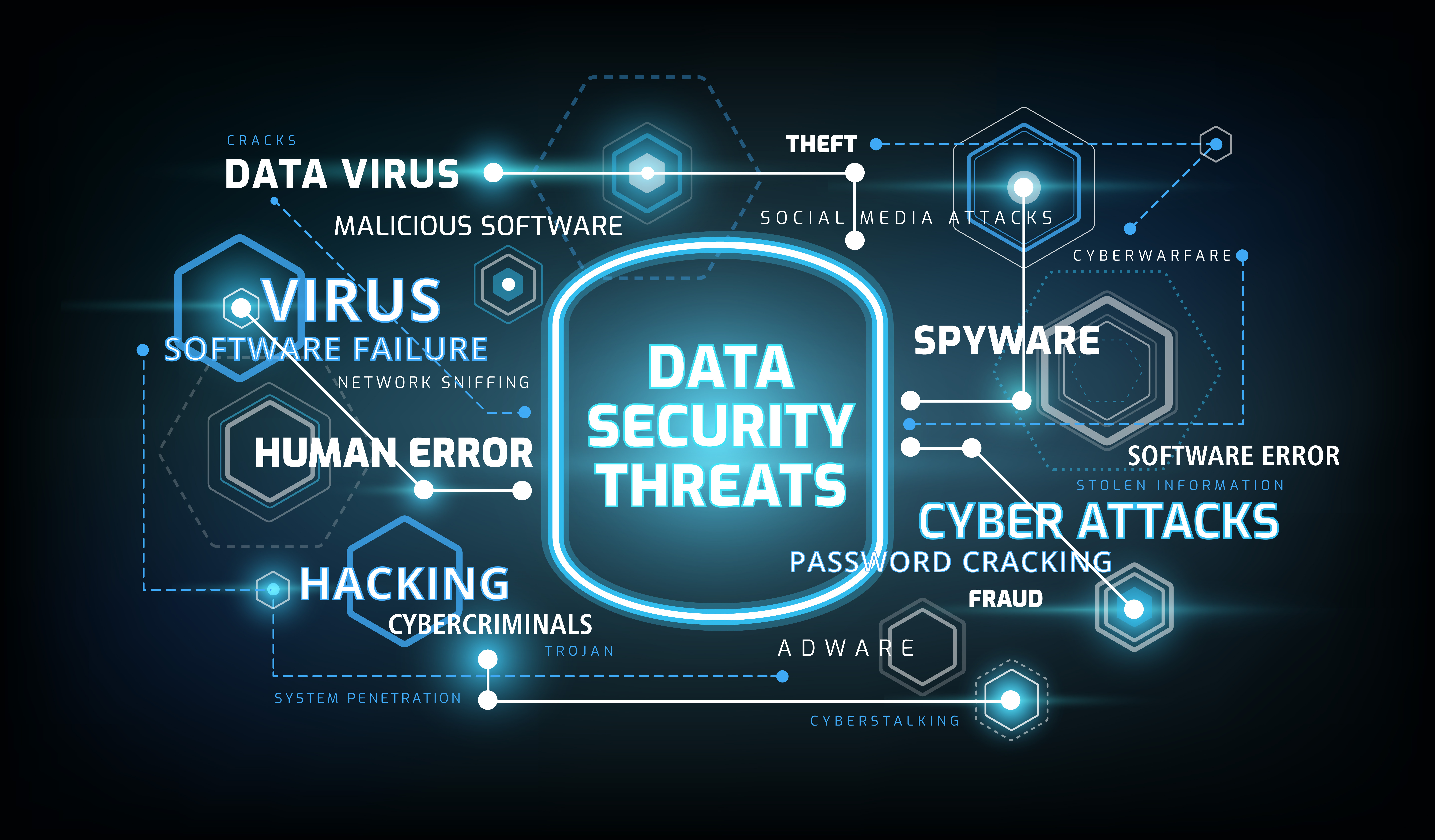
A recent 2021 report on security threats in healthcare conducted across 30 countries reveals some worrying statistics:
-
34% of the respondents were affected by ransomware attacks in the last year
-
65% of those affected had their data encrypted by the cybercriminals
-
34% of those whose files had been held hostage via encryption paid the ransom, with the total losses amounting to an average of US$1.27 million
-
Only 24% of the participants do not expect to be hit by a ransomware attack within the next year
With these numbers in mind, let’s look at the healthcare security issues that top the list.
Ransomware scams
Ransomware remains one of the biggest challenges healthcare faces, but now there’s a twist. The threats used to be about never getting your business’s data back unless you paid. Today’s cybercrooks have changed the rules of the game: it’s the risk of them exposing your customers’ records that puts your reputation on the line.
The typical mode of operation of ransomware attackers is to infiltrate an organization’s network by sending malware via email links or in messages. However, hackers can find other ways to penetrate the system — through vulnerabilities and poorly configured VPNs, for example. Cybercriminals have become so bold, they’ve started offering their services on a paid basis as “ransomware operators,” Kaspersky Lab reports.
The risks of neglecting privacy and security in healthcare are real, and the attacks are intensifying. According to the Identity Breach Report, the number of exposed health records went up by 51% from 2019 to 2021.
Here’s another motive of malicious agents.
Hacktivism
With many hacker groups like REvil (currently out of business) and Anonymous roaming the digital land, patient data security is always at risk. Besides the obvious financial gains, their activity is often politically or socially motivated — which is the definition of hacktivism.
“Operation Justina” is a vivid example of such cyberattacks, perpetrated by Anonymous and other hackers in response to the Justina Pelletier controversy. The attack crippled the internal network of the Boston Children’s Hospital and their website, disrupting some of the facility’s core operations.
But the truth is, hacktivism is only one of the numerous security issues in healthcare. And some are more prosaic than others.
User error
Sending unencrypted medical data over email or in messages is a surefire way to lose it in a cyberattack. Even better: sending one’s access credentials or storing them in a simple Google doc. We’re all human, and your employees are just as likely to make these mistakes as your patients. The difference is in the scale of the repercussions.
Use of legacy technology
As it turns out, using older technology can’t guarantee the security of your patients’ data either. Outdated software can be a major source of security issues in hospitals. The culprit could be an older version of the operating system or a legacy EHR solution. The problem is simple: vendors only provide support and updates for a certain amount of time. When that period is over and you stop receiving security patches, any vulnerabilities in the software are an open door that welcomes hackers.
The same goes for hardware: unsupported components can block the installation of new software, creating a security bottleneck.
But it’s not only about the age of the technologies in use.
Adoption of cloud technology and mobile apps
Just like most businesses today, healthcare providers are going through a digital migration phase. This includes switching to cloud services and increasingly adopting mobile applications, both for staff and patients. This, in turn, creates additional opportunities for new security threats in healthcare.
The issue with cloud and mobile tech mainly has to do with on-the-fly encryption of the data that’s constantly traveling between servers and devices. Using personal mobile devices is another danger since they don’t always offer the same level of security as those issued by the employer.
Data encryption and safety protocols need to be carefully crafted and painstakingly implemented to ensure security and compliance.
Malicious agents, poorly designed security frameworks, and human error are the primary sources of concern when it comes to security in healthcare. However, there are always ways of mitigating those risks, and we will share some of them in the next section.
6 Tips on how to protect healthcare data
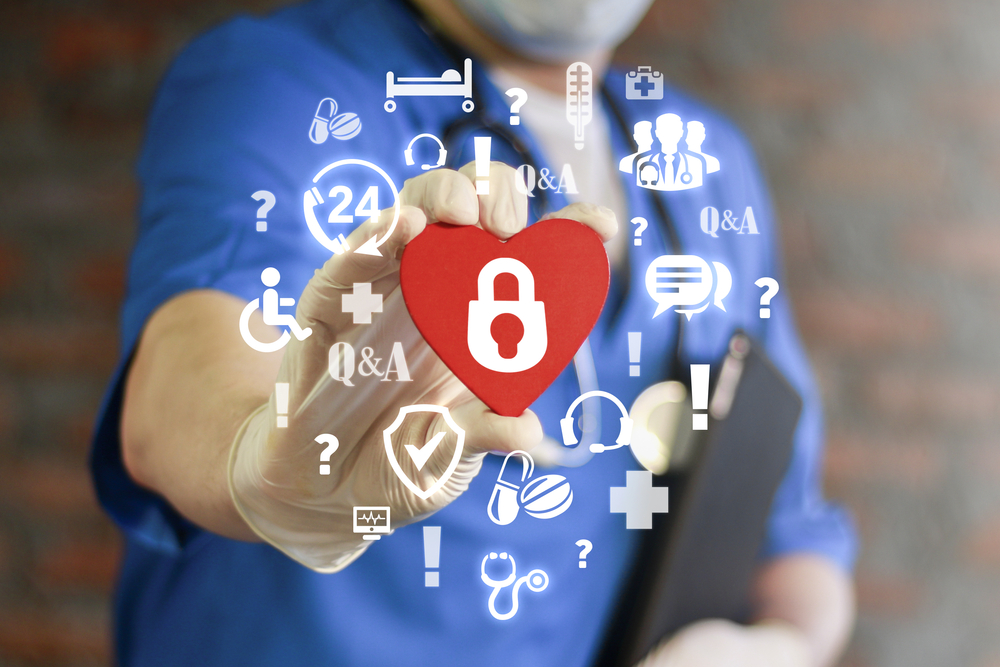
To build a system of health data security practices, use the tips below that are best suited to your business model.
Follow a strict backup routine
Cloud-based solutions offer this as part of basic functionality, but even if you’re using in-house servers, regular backup is a must. We recommend opting for an isolated offsite location if you’re aiming for maximum security.
Implement data access levels and controls
In a typical clinical setting, patient data is constantly accessed by multiple medical professionals. Administrative staff, doctors, and technicians require various levels of access rights. Not everyone needs to be able to change or erase records, and some of them may even require special clearance to be viewed. Implementing those permissions correctly can prevent accidental loss of data and minimize the risk of unauthorized access.
Using data controls can add another layer of protection for healthcare solutions. To do that, you must define what sensitive data is and tag it accordingly. With those tags, your system can red flag or block certain activities like copying, moving, or erasing specific files. For instance, you can prevent image files from being downloaded remotely, or medical history files from being saved on unencrypted drives.
Use data exchange standards developed for healthcare
Specialized data exchange standards like HL7 and FHIR aren’t just a great solution for interoperability issues. They’ve been created in accordance with the security needs of medical software, so adopting them in your workflow is a win-win scenario.
Spend a few minutes on this comprehensive overview of medical data exchange standards to learn more.
Secure IoT and mobile devices
With the recent advances in connected devices, it makes sense to consider them as a possible security vulnerability. With equipment as complex as insulin pumps that have their own firmware and apps, there’s a real chance that hackers can use them as an entry point into your system. To prevent this scenario, it’s best to manage IoT devices on a separate network and monitor their activity.
Mobile devices like smartphones and tablets also deserve their fair share of attention. Keeping them updated with the latest security patches is a no-brainer. Implementing the controls to remotely erase their internal drives is a welcome addition to your security framework.
Educate your staff
No amount of security precautions will have the desired effect if your employees aren’t trained well. Your staff should be educated on the basics of internet security and have a good grip on the local tools and procedures that are in place. Strong passwords and digital hygiene should be a baseline. It’s one of the best preventative measures you can take.
Perform timely updates and install security patches
Software vendors put a lot of effort into supporting their products. Providing prompt security fixes is standard practice for any responsible software developer. As soon as a vulnerability is discovered, the vendor engineers a solution and sends out an update to registered users. This works for desktop and mobile operating systems, as well as for applications.
One more tip: make sure to read our article on preventing security breaches in healthcare for a more in-depth guide.
We’ve provided you with an extensive selection of options, but what are the actual solutions that incorporate them? Let's find out.
What types of healthcare data security solutions should you use?
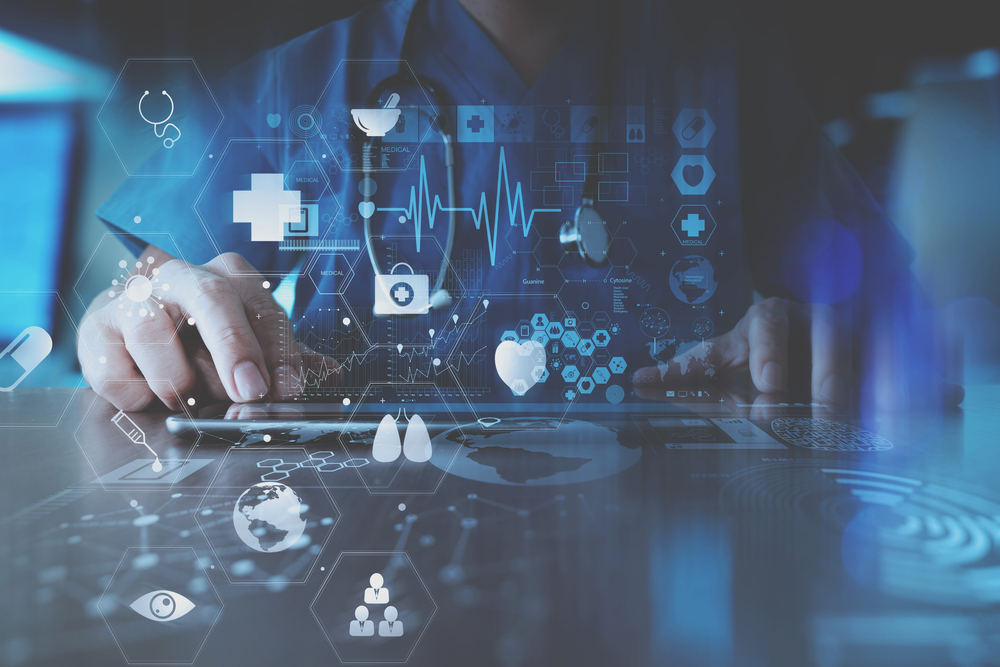
Choosing the right security solution for healthcare data requires careful consideration. Here are some types of software to get you started.
System monitoring apps
Monitoring your resources is a smart way to identify security threats in healthcare. Your IT department can use special apps to watch for sudden spikes in the network or disk usage, as well as to control activity on external system gateways. Healthcare cybersecurity solutions can also track changes to user accounts or access levels, issuing immediate alerts.
Data backup and recovery solutions
Backing up your critical data is a healthy practice for any business, medical or not. In the case of sensitive health information, this approach is more effective for mitigating the aftermath of human error or other accidents. If you lose your patient data due to hardware failure, a recent backup can save your business from financial and legal trouble.
Encryption protocols for transfer and storage
Using encryption (mathematical encoding for authorized use only) of data at-rest (when stored) and in-transit (while transmitted) is an efficient way of preventing data leaks. If your database security is compromised or your data is intercepted, the information will be useless to those without the encryption key. Ironically, it’s the same technology hackers use for their ransomware attacks.
Antivirus/malware/spyware apps
With so many sophisticated ways of losing your data on the table, we shouldn’t discount the good old Trojan horse or a trusty piece of spyware. The healthcare industry is just as vulnerable to these attacks as any other, and cybercriminals will be happy to scavenge any valuable data they can get access to. Having an anti-malware app up and running at all times, with the latest descriptions, is always a smart move and a solid investment.
Going with each of the options described above can help you resolve or prevent some healthcare security issues. But for the data in your organization to become unreachable for attackers and safe from accidents, you’ll need a well-designed, multifaceted solution — one that encompasses the latest trends and works like clockwork.
When should you develop a custom healthcare data security solution?

The quick answer is: as soon as you can.
Too many medical institutions have learned the importance of iron-clad data security the hard way. Waiting for the right moment to implement proper security measures isn’t a viable strategy in today’s reality. Basing your software on the right principles from the start and adding a custom-made data security solution, however, can be.
While this advice sounds universal, there are several scenarios where developing healthcare data security solutions can be especially beneficial for your medical business. Here are a few:
-
you have a complex IT infrastructure
-
you’re running legacy software that currently can’t be upgraded or substituted
-
you have a very specific combination of security requirements
-
your mobile apps for patients and medical staff create security threats
-
you rely heavily on IoT devices and want proactive security
-
you’ve just moved to the cloud and aren’t satisfied with the level of the built-in security
Each healthcare provider, each facility may have unique data protection needs, and there’s no “one size fits all” solution. That’s why we’d like to encourage you to accept help from professionals when the time comes to address your data security challenges.
Conclusion
The Demigos team knows the ins and outs of building healthtech software — like the GapNurse project we recently completed. We can help you devise business logic, design the user experience and interface, and implement cutting-edge security features. And if you already have a system that works well, Demigos can create a standalone healthcare data security solution to cater to your needs.
Get in touch today, so we can root out your security issues before your data is ripe for the taking by cybercriminals.



